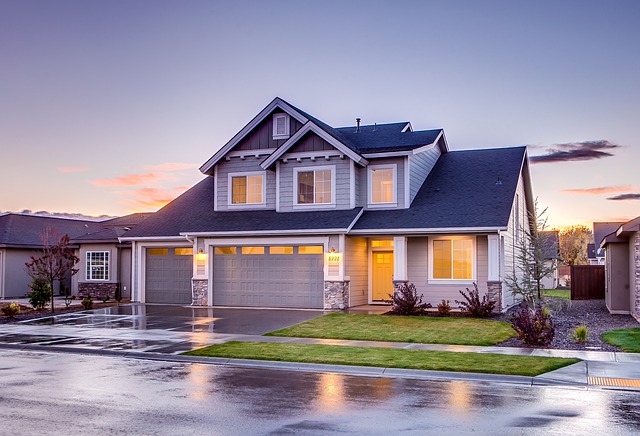Painting your home’s exterior is a significant project that can dramatically enhance its appearance and increase its value. A well-executed paint job not only improves curb appeal but also protects your home from the elements. Successful exterior painting requires careful planning, the right materials, and meticulous execution. This guide will provide you with comprehensive steps to ensure a high-quality finish that lasts. Whether you’re tackling the job yourself or hiring professionals, these tips will help you achieve the best results.
Choosing the Right Time
Selecting the optimal time for painting your home’s exterior is crucial for a successful outcome. Weather conditions play a significant role; aim for a period when temperatures are moderate, typically between 50°F and 85°F, and there is low humidity. Avoid painting during the rainy season or in extremely hot weather, as these conditions can affect paint adhesion and drying. Spring and fall are often the best seasons for exterior painting due to the mild weather. Additionally, check the forecast to ensure a few days of dry weather to allow proper curing of the paint.
Preparing the Surface
Proper surface preparation is essential for a long-lasting paint job. Start by thoroughly cleaning the exterior walls to remove dirt, mildew, and loose paint. Pressure washing is an effective method, but be cautious not to damage the siding. After cleaning, scrape off any peeling or flaking paint and sand rough edges to create a smooth surface. Fill in cracks and holes with a suitable filler and allow it to dry completely before priming. For a flawless finish, apply natural blend painter’s putty to any remaining imperfections and sand lightly once it has set.
Selecting the Right Paint and Primer
Selecting the right paint and primer is crucial when undertaking the task of painting your home’s exterior, and considering options like limewash paint can offer significant benefits. Lime paint is renowned for its natural ingredients and ability to provide a breathable, matte finish that enhances the durability of exterior surfaces. When choosing a primer for lime paint, opt for one that promotes adhesion and seals porous materials effectively. This preparation ensures the paint adheres well and achieves a smooth, even coat that withstands weather elements. Consulting with paint experts or visiting reputable suppliers can provide insights into the best paint and primer combinations for achieving long-lasting results with lime paint on your home’s exterior. By investing in quality materials and proper preparation, homeowners can achieve a refreshed exterior that not only enhances curb appeal but also protects and preserves the integrity of their property.
Gathering the Necessary Tools and Materials
Having the right tools and materials on hand can make the painting process smoother and more efficient. Essential items include brushes, rollers, painter’s tape, drop cloths, ladders, and safety equipment such as goggles and gloves. Invest in high-quality brushes and rollers to achieve a smooth finish and minimize streaks. Using a paint sprayer can save time on larger surfaces, but it requires skill to use effectively. Make sure you also have plenty of paint and primer to avoid running out mid-project.
Applying the Primer
Applying primer is a crucial step that should not be skipped. Start by cutting in the edges with a brush, then use a roller or paint sprayer to cover larger areas. Apply the primer in a thin, even coat and let it dry completely according to the manufacturer’s instructions. Priming seals the surface helps to cover imperfections, and enhances the adhesion of the topcoat. Pay extra attention to areas that are prone to moisture or wear, such as window sills and door frames.
Painting the Exterior
When it’s time to apply the paint, begin by cutting in around the edges and trim with a brush. Then, use a roller or paint sprayer to cover the larger surfaces, working in small sections to ensure even coverage. Apply the paint in thin, consistent layers rather than one thick coat, allowing adequate drying time between coats as recommended by the paint manufacturer. This method helps to avoid drips and ensures a smooth, professional finish. Typically, two coats of paint are sufficient for optimal coverage and durability.
Focusing on Details
Attention to detail can significantly enhance the overall appearance of your paint job. Carefully paint trim, windows, and doors, using painter’s tape to achieve clean lines and prevent paint from bleeding onto other surfaces. Use small brushes for intricate areas, and take your time to ensure precision. If painting different colors, allow one area to dry completely before taping and painting adjacent sections. You can also just hire professional painters from Prescott Valley and let them worry about focusing on the details for you.
Cleaning Up
Proper cleanup is the final step in a successful exterior painting project. Remove painter’s tape carefully to avoid peeling off any fresh paint. Clean brushes, rollers, and other tools immediately after use to prolong their lifespan. Dispose of any paint cans, rags, and other materials according to local regulations. Inspect the painted surfaces for any touch-ups that can be needed and address them promptly. Proper cleanup not only leaves your work area tidy but also prepares you for future painting projects.
Conclusion
Successfully painting your home’s exterior requires thorough preparation, the right materials, and careful execution. By choosing the right time, preparing the surface, selecting the appropriate paint and primer, and using quality tools, you can achieve a durable and aesthetically pleasing finish. Attention to detail and proper cleanup further enhance the overall quality of the project. Following these steps ensures that your exterior paint job not only looks fantastic but also stands the test of time. Investing effort in painting your home correctly will result in a refreshed, attractive appearance that boosts curb appeal and protects your property.


